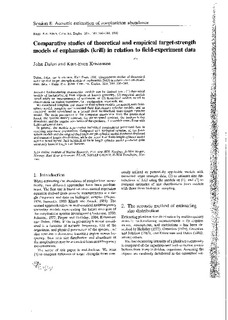| dc.description.abstract | The authors considered complete and truncated fluid-sphere models, an approximate fluid-sphere model, complete and truncated fluid finite-length cylinder models, and an empirical model considered as a hybrid fluid bubble/fluid finite-length cylinder model. The main parameters in the computer simulations were the geometrical forms, the specific-density contrast, the sound-speed contrast, the backscattering directivity, and the angular orientation of the specimen. The models were all run with field-experiment data. In general, the models representing individual zooplankters performed best in resolving mixed-size populations. Compared with biological samples, all the fluid-sphere models and the original fluid finite-length cylinder model produced displaced and truncated length distributions, while the tuned fluid finite-length cylinder model and the tuned hybrid fluid bubble/fluid finite-length cylinder model produced quite accurately located length distributions. | en |
